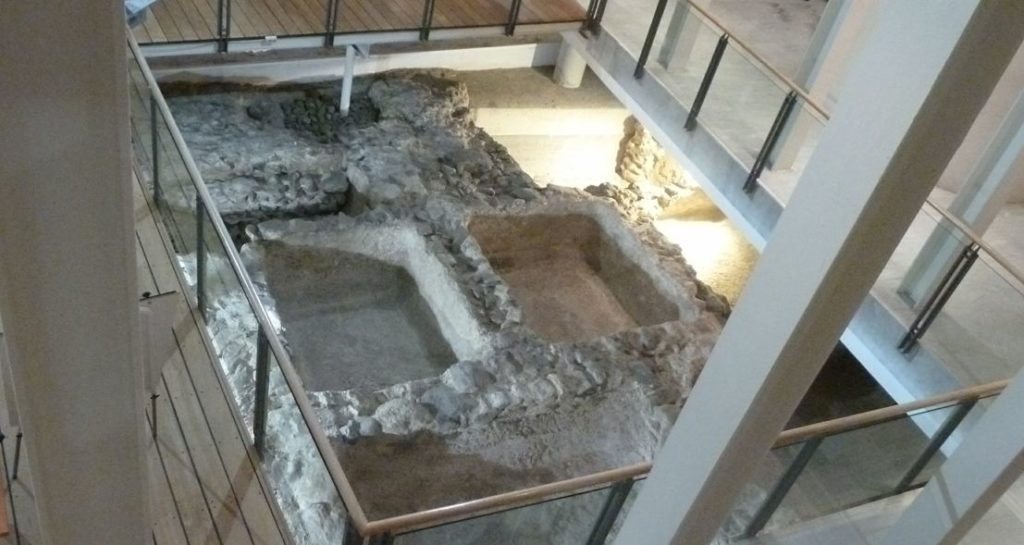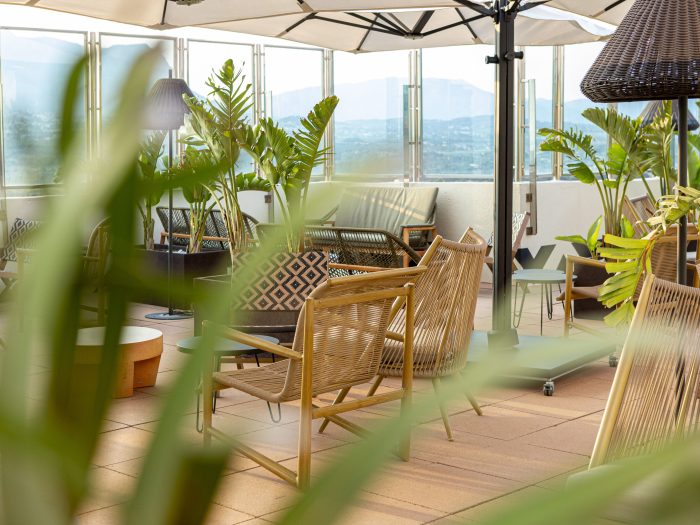Privacy Policy
MED PLAYA aims to respect the privacy of customers and users of its website and social networks and to protect the personal data that may have been provided through any form of contact with our hotel chain.
For this reason MED PLAYA has implemented the necessary security measures, both technically and organizationally, required to ensure the security and integrity of the personal data of our customers, thus preventing loss and unauthorized treatment or access in accordance with current legislation in the area of data protection.
In this regard, and in accordance with the provisions of Regulation (EU) 2016/679 of the European Parliament (GDPR), below we detail information regarding the processes that MED PLAYA carries out on your data.
Who is the controller of your personal data?
COMPANY NAME: MED PLAYA MANAGEMENT, SL
N.I.F. [Fiscal Identification Number] B17076886
Registered address: Paseo General Mendoza, nº 1, Planta 6ª, CP 17002, Girona.
Email: rgpd@medplaya.com
For what purposes do we process your personal data?
We process the data obtained in order to manage the registration process and our relationship with the users of our website, to answer and respond to the requests of users through the different contact forms and to administratively manage the contracted service.
And specifically, at MED PLAYA we carry out the following processes on your personal data:
ONLINE RESERVATIONS: By filling in the online Reservation form, the user accepts and authorizes MED PLAYA MANAGEMENT, SL to automatically use and process the personal data provided for the purposes of administering the requested reservation and to provide the contracted accommodation service. If the user has expressly consented to receive commercial communications by checking the box on the form relating to the receipt of publicity regarding the services and offers made by the MED PLAYA group, their personal data will be further processed to provide them with information regarding our news and offers by email.
Similarly, the user is informed that when they make a reservation, their personal data and that relating to the reservation will be passed to the companies that make up the MED PLAYA group which are involved in the management of the reservation and the execution of the same for the purposes previously described.
MedPlaya Amigo!: By completing the registration request for the MedPlaya Amigo! programme, the user accepts and authorizes MED PLAYA MANAGEMENT, SL to use and process the personal data provided for the purposes of the customer loyalty programme of the MED PLAYA group, such as the improvement of the commercial relationship with the client and making personalized offers.
Similarly, for the proper fulfilment of the programme, your personal data will be transferred to companies of the MED PLAYA group for the purposes described above.
The Personal Data that you provide will be processed to identify you as a user of the programme and to give you access to the various features and services that are available to users registered in the programme.
The user can, at any time, revoke consent for the processing of their personal data by sending an email to rgpd@medplaya.com. However, the revocation of consent will imply the exclusion of the client from the MedPlaya Amigo! programme.
CONTACT FORMS: By filling in the contact and opinion form on the website, the user accepts and authorizes MED PLAYA MANAGEMENT, SL to use and process the personal data provided in order to respond to requests, suggestions and complaints, as well as to improve the quality of service. For the proper attention of and answer to the communication, your personal data may be transferred to companies of the MEDA PLAYA group in order to give the most appropriate response to the request.
The user can, at any time, request the cancellation of their personal data by sending an email to rgpd@medplaya.com.
TELEPHONE CALLS TO OUR CUSTOMER SERVICE (CALL CENTRE): By contacting our Call Centre, the user accepts and authorizes MED PLAYA MANAGEMENT, SL to use and process the personal data provided in order to respond to requests, suggestions and complaints, as well as to improve the quality of service. For the proper attention of and answer to the communication, your personal data may be transferred to companies of the MEDA PLAYA group in order to give the most appropriate response to the request.
The user can, at any time, request the cancellation of their personal data by sending an email to rgpd@medplaya.com.
CURRICULUM VITAE: By completing the CV submission form on our website, the user accepts and authorizes MED PLAYA MANAGEMENT, SL to use and process the personal data provided so that it may be integrated into a personnel selection database with the purpose of being entered into the personnel selection processes for the different hotels and companies belonging to the MED PLAYA group.
How have we obtained your personal data and what legitimacy do we have for the processing of your data?
The legal basis for the treatment of personal data is the express consent that the person concerned has previously provided, as well as compliance with legal obligations as set forth in Regulation (EU) 2016/679, of the European Parliament and of the Council, of 27th April, 2016, and other legal regulations in force regarding data protection.
Therefore, the personal data that we process derives from the person concerned or their legal representative. In no cases are special categories of personal data processed, such as: data that reveals ethnic or racial origin, political opinions, religious or philosophical convictions, union membership data, genetic data, data relating to the health of a natural person.
Not providing the requested personal data, or not accepting this data protection policy, means that it will be impossible to subscribe, register, receive information about the services or the exclusion from the MedPlaya Amigo! programme.
In those cases where there is a prior contractual relationship between the parties, the legitimacy for carrying out the administrative, tax, accounting and employer obligations that are necessary under current legislation will be the previous existence of such a business relationship.
How long will we keep your data?
Personal data will be kept for the period that you have a relationship with us and in all cases for the periods stipulated in the applicable legal provisions and for the time strictly necessary in order to meet possible obligations arising from the processing.
In all cases, we will cancel your data when it is no longer necessary or relevant for the purposes for which it was collected after a period of 10 years from the last service contract, provided you have not previously requested the cancellation of the data.
The data processed for commercial purposes will be kept until its deletion is requested. The user can revoke the consent for the processing of their personal data at any time by sending an email to rgpd@medplaya.com.
Curriculum vitae that are sent to the company will be deleted after a period of 2 years from receipt.
To which recipients will your data be communicated?
No data will be transferred to third parties, except for companies belonging to the MED PLAYA group, to providers that provide services on our behalf and in compliance with any legal obligation. The data passed to companies within the group itself will be transferred with the purpose of being able to share the necessary information for the proper provision of the service.
The information that you provide to us through this website, as well as through the application, will be stored on servers owned by MED PLAYA MANAGEMENT, SL.
What are your rights?
Anyone has the right to obtain confirmation of whether MED PLAYA is processing their personal data.
Thus you have the right to obtain confirmation of whether or not we are processing your personal data and, if so, access the same. You can also request that your data be rectified when it is inaccurate or incomplete, as well as request its deletion when, among other reasons, the data is no longer required for the purposes for which it was collected.
In addition, in certain circumstances you may request the restriction of the processing of your data or, for reasons relating to your particular situation, you may also oppose the processing of your data. In this case we will stop processing the data, except for legitimate reasons that prevail over those interests and rights or for the establishment, exercise or defence of claims.
These are your rights:
ACCESS TO YOUR DATA: You will be able to consult the personal data held in MED PLAYA group files.
RECTIFICATION OF YOUR DATA: You can modify personal data if it is inaccurate.
DELETION OF YOUR DATA: You can request that your personal data be deleted.
PORTABILITY OF YOUR DATA: You can ask to receive, in electronic format, all the personal data that you have given us, which is necessary for the contractual relationship with the MED PLAYA group.
OPPOSITION TO THE PROCESSING OF YOUR DATA: You may request that your personal data not be processed.
RESTRICTION OF PROCESSING: You can request the restriction of processing in the following cases: a) while the accuracy of contested personal data is checked b) when the treatment is unlawful but you object to the deletion of your data c) when the MED PLAYA group does not need to process personal data but you need the same for the exercise or for the defence of claims d) when you have opposed the processing of your personal data.
To exercise these rights you must complete the request form accompanied by a copy of your national identity document sending it by email (rgpd@medplaya.com) or to the postal address: Data Protection MED PLAYA, Paseo General Mendoza, nº1, Planta 6ª, CP-17002, Girona.
In any case, the user has the right to file a claim with the Spanish Data Protection Agency if he or she considers that any right relating to the protection of his/her personal data has been violated or if he/she considers that the processing of personal data concerning him/her infringes Regulation (EU) 2016/679 of the European Parliament.
Modifications to the Privacy Policy
This Privacy Policy may be updated at any time in order to adapt it to new legislation or jurisprudence. In all cases, any legislative or jurisprudential innovation will be duly communicated by email or by notice on the website.
This privacy policy is published on our website www.medplaya.com





 -10%
-10% 

